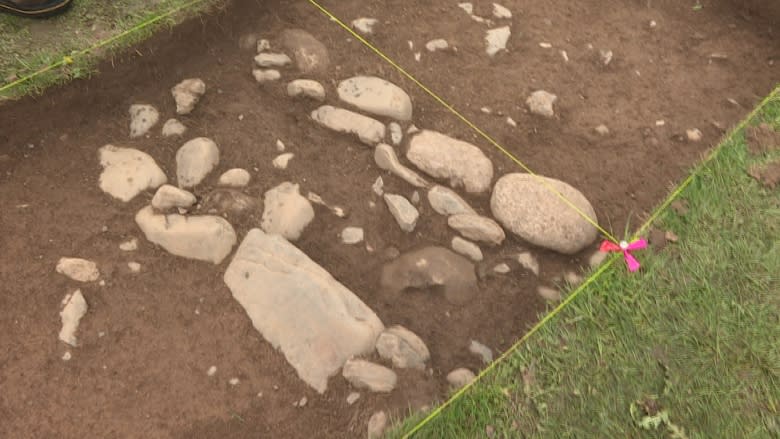Nova Scotian archeologists dig deep to help buildings go up
Archeological work is experiencing a boom in Nova Scotia as developers become increasingly interested in what lies beneath the surface, says the curator of archeology for the Nova Scotia Museum.
Catherine Cottreau-Robins said in most cases archeologists are being hired by developers who don't want to risk disturbing archeological sites when they start a new building project.
In the last 10 years, the number of heritage research permits the province issues annually for archeological work has jumped to about 125 from 50 or 60.
"Developers are more and more keen on archeology," said Cottreau-Robins.
"They incorporate archeology as a part of their development process. Many of the permits for archeological work that are issued are associated with new development."
Archeology is the study of human history and prehistory through people's tools, objects and remains buried in the earth.
Artifacts are protected
Archeological resource impact assessments are done to determine if a potential construction site could house archeological artifacts.
Sometimes those assessments involve archeologists simply researching an area to determine if it's likely to have artifacts buried there, other times the archeologists have to do a dig as well.
Those assessments are often done for new apartment buildings, condominiums and highways before construction starts.
The assessments are important because Nova Scotia is chock full of archeological artifacts. Habitation by the Mi'kmaq, Europeans, African Nova Scotians and Acadians have left a treasure trove of items buried beneath our feet.
Archeological artifacts are protected under Nova Scotia's Special Places Protection Act. Artifacts can't be removed unless the province provides a permit to do so.
Archeological work can save time and money
If archeologists working for a developer find an artifact on a potential work site, the item is either removed or the development may have to change its construction plans so it won't damage the artifact.
The province can also issue a stop-work order on a site if it feels artifacts might be in danger.
"Nobody wants a project to be slowed down at the 11th hour because of something that's been found that we could have avoided or could have known about earlier on," said Sean Weseloh-McKeane, the special places co-ordinator with the provincial Department of Communities, Culture and Heritage.
"That costs money for developers, it costs money for [the] provincial government."
Weseloh-McKeane believes there's an increased awareness of archeology's importance among developers and even other government departments, and that is most likely driving the increase in permits.
"This is just something that can help facilitate those projects running more smoothly if the archeology is included up front as part of the planning process."
'You want to see new discoveries made'
He said the increased work has also created demand for archeologists.
"There are certainly more archeologists working in the field than would have been the case 10 or 15 years ago, absolutely."
Cottreau-Robins said places like downtown Halifax, along with areas around watersheds and major rivers in the province, likely house artifacts because people lived in those areas for long stretches of time.
There are already 2,000 recorded archeological sites in Nova Scotia.
"It's been great, it's been exciting," said Cottreau-Robins.
"As an archeologist, you want to see archeology happening, you want to see new discoveries made, you want to learn about the past."




